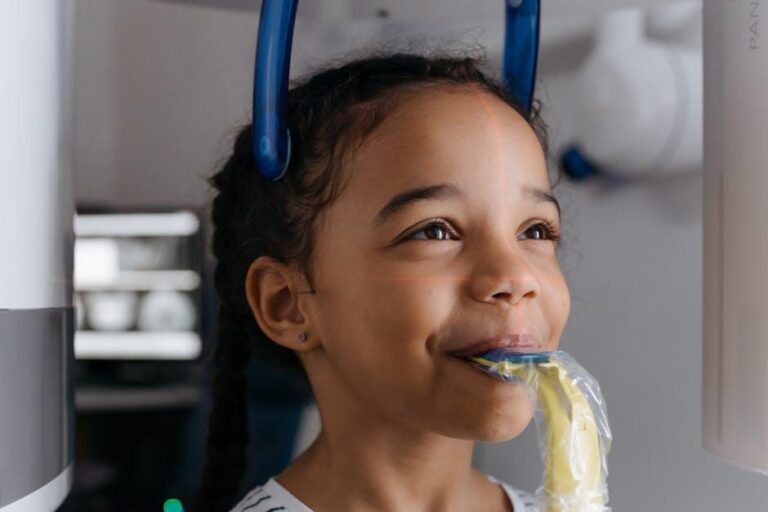1 in 3 Kids Has Dental Problems, Poll Finds – U.S. News & World Report
Dental health is more than just a bright smile — it is a crucial component of overall well-being, especially for children. A recent poll examined by U.S. News & World Report reveals a startling statistic: one in three children in the United States suffers from dental problems. This figure highlights an urgent public health concern affecting millions of families nationwide and calls for increased awareness and proactive care.
Understanding the Scope: The Poll’s Key Findings
The poll surveyed thousands of parents and guardians across the U.S. to assess the prevalence and types of dental problems among children aged 2 to 12. Here are the central findings:
- 33% of children have experienced at least one dental issue, such as cavities, tooth decay, or gum disease.
- The highest rates of dental problems were found in lower-income households, spotlighting socioeconomic disparities.
- Only about 60% of kids had visited a dentist in the past year, despite professional recommendations for biannual visits.
- Poor oral hygiene habits, sugary diets, and limited access to dental care were key contributors to the rise in dental problems.
Common Dental Problems in Kids
Understanding the various dental issues that affect children’s oral health can help parents take preventive measures early.
| Dental Problem | Symptoms | Causes |
|---|---|---|
| Tooth Decay (Cavities) | Pain, visible holes or pits, sensitivity to hot/cold | Poor brushing, sugary foods, bacteria buildup |
| Gum Disease (Gingivitis) | Red, swollen gums, bleeding during brushing | Plaque buildup, inadequate brushing/flossing |
| Tooth Sensitivity | Sharp pain when eating or drinking hot/cold items | Enamel erosion, cavities, brushing too hard |
| Dental Trauma | Chips, cracks, or knocked-out teeth due to injury | Falls, sports injuries, accidents |
Why Are So Many Kids Facing Dental Problems?
Several interlinked factors contribute to this widespread issue of pediatric dental problems:
1. Inadequate Oral Hygiene Practices
Many kids either do not brush and floss regularly or do so incorrectly. Early education about proper techniques is often missing in homes and schools.
2. Diet High in Sugar
Frequent consumption of sugary snacks, juices, and sodas fuels the bacteria in the mouth that cause cavities and decay.
3. Limited Access to Dental Care
Families in rural or low-income areas may lack access to pediatric dentists, preventive treatments like sealants, or early diagnosis.
4. Lack of Parental Awareness
Not all parents realize how critical early and regular dental visits are for children’s long-term oral health.
Benefits of Early Dental Care and Regular Checkups
Ensuring children receive proper dental care early on can lead to lifelong benefits:
- Prevention of Pain and Infection: Regular checkups can catch problems before they worsen.
- Improved Nutrition: Healthy teeth allow kids to chew food properly and absorb nutrients effectively.
- Boosted Self-Confidence: A healthy smile contributes positively to social interactions and self-esteem.
- Cost Savings: Preventive care reduces the need for extensive and expensive procedures later.
Practical Tips for Parents to Protect Kids’ Dental Health
Here are effective strategies parents can adopt to keep their children’s teeth healthy:
- Start Early: Clean gums with a soft cloth and begin brushing as soon as the first tooth appears.
- Brush Twice Daily: Use fluoride toothpaste and a suitable toothbrush, encouraging kids to brush for two minutes.
- Limit Sugary Snacks and Drinks: Encourage water and healthy snacks such as fruits and vegetables.
- Routine Dental Visits: Schedule the first dental appointment by the child’s first birthday and follow up every six months.
- Educate and Motivate: Make oral hygiene fun with reward charts, interactive apps, or brushing songs.
- Use Protective Gear: For active kids, encourage mouthguards during sports to prevent dental trauma.
Case Study: The Impact of Early Intervention
Take Sarah, a 7-year-old girl from Ohio, who was part of a community dental health program. Her parents learned about proper brushing, nutrition, and the importance of regular dentist visits through this initiative. Sarah’s dental checkups every six months helped detect and fill small cavities early, preventing pain and more serious issues.
Her story is a testament to how awareness and accessibility can dramatically improve child dental health outcomes.
First-Hand Experience: What Pediatric Dentists Say
Dr. Emily Johnson, a leading pediatric dentist, emphasizes:
“Many dental problems in kids are preventable with simple lifestyle changes and timely checkups. Educating parents and children is key — a healthy smile starts at home and thrives with professional support.”
Conclusion: Taking Action Against Pediatric Dental Problems
The poll revealing that 1 in 3 kids has dental problems serves as a wake-up call for parents, caregivers, and communities. Children’s oral health must not be overlooked — it impacts their comfort, nutrition, school performance, and self-esteem. By promoting proper dental hygiene, limiting sugar, ensuring access to regular dental care, and advocating for oral health education, we can help reverse this troubling trend.
Remember, a healthy smile at an early age lays the foundation for a lifetime of good dental health. Start today by scheduling a dental checkup for your child and empowering them with the tools they need to protect their precious smiles.


